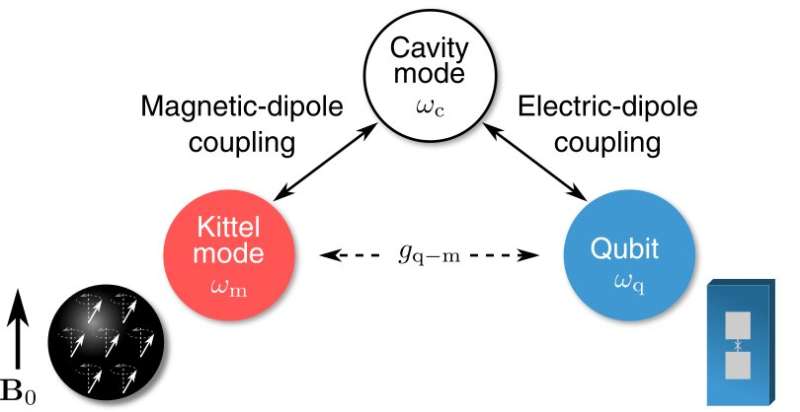A spookily good sensor

Scientists from the Research Center for Advanced Science and Technology (RCAST) at The University of Tokyo demonstrated a method for coupling a magnetic sphere with a sensor via the strange power of quantum entanglement. They showed that the existence of even a single magnetic excitation in the sphere could be detected with a one-shot measurement. This work represents a major advancement toward quantum systems that can interact with magnetic materials.
Imagine having a sensor powerful enough to tell you, in a single sweep, if a nearby haystack contained a needle or not. Such a device might seem like it could exist only in science fiction, but, using one of the most counterintuitive effects of quantum mechanics, this level of sensitivity can become reality. Entanglement, the strange process at the heart of quantum mechanics that allows linked particles to interact instantly over long distances, was once called "spooky action at a distance" by Albert Einstein.
Experiments have confirmed that quantum mechanics permits situations in which parts of a system can no longer be described separately, but rather become fundamentally entangled, such that measurement of one automatically determines the fate of the other. For example, two electrons can become entangled so that they are both pointing up or both pointing down—so measuring one instantly affects the state of the other. "Entanglement has been in quantum mechanics textbooks for decades," says first author Dr. Dany Lachance-Quirion, "but the applications for producing very sensitive detectors with it are only now starting to be realized."
In the experiments conducted at RCAST, a millimeter-sized sphere of yttrium iron garnet was placed in the same resonant cavity as a superconducting Josephson junction qubit, which acted as the sensor. Because of the coupling of the sphere to resonant cavity, and, in turn, between the cavity to the qubit, the qubit could only be excited by an electromagnetic pulse if no magnetic excitations were present in the sphere. Reading the state of the qubit then reveals the state of the sphere.
"By using single-shot detection instead of averaging, we were able to make our device both highly sensitive and very fast," Professor Yasunobu Nakamura explains. "This research could open the way for sensors powerful enough to help with the search for theoretical dark-matter particles called axions."
The work is published in the journal Science as "Entanglement-based single-shot detection of a single magnon with a superconducting qubit."
More information: Dany Lachance-Quirion et al, Entanglement-based single-shot detection of a single magnon with a superconducting qubit, Science (2020). DOI: 10.1126/science.aaz9236
Journal information: Science
Provided by Japan Science and Technology Agency



















